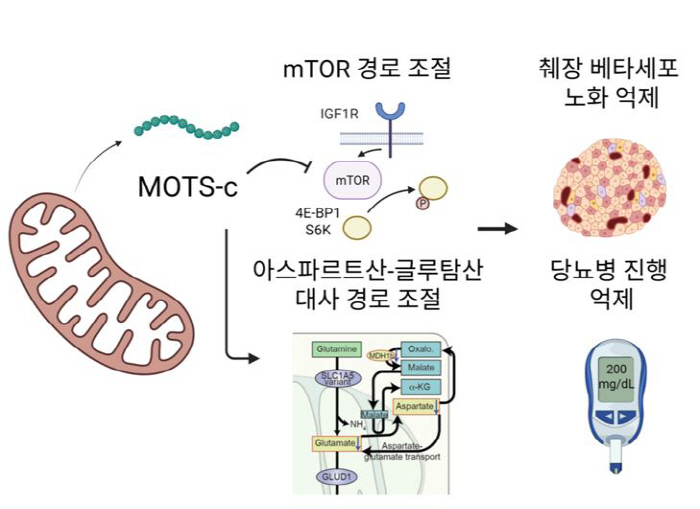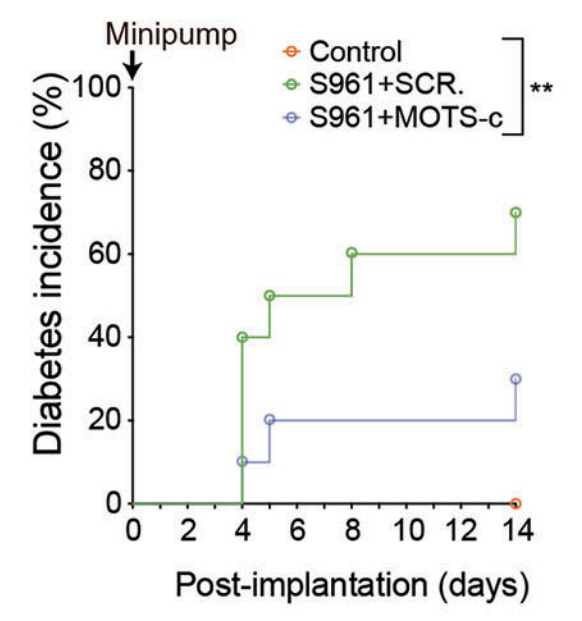Directly targeting cell aging, slowing diabetes progression
Sep 16, 2025
|
Diabetes is a key cause of deterioration and loss of pancreatic beta cells that synthesize and secrete insulin.
In particular, as beta cells age, insulin secretion ability decreases, and this process plays an important role in the development and progression of diabetes. However, so far, few therapeutic strategies have directly regulated cell aging.
Meanwhile, a team led by Professor Cho Young-min of the Department of Endocrine Metabolism at Seoul National University Hospital (first author, Dr. Gong Byeong-soo) paid attention to the possibility of peptide MOTS-c expressed in mitochondrial DNA. MOTS-c is a substance first discovered in 2007 in a joint study between Seoul National University Hospital and Tokyo Senior Research Institute in Japan, derived from areas related to life expectancy and control of diabetes risk. Since then, the function of glucose metabolism regulation has been known, but the association between pancreatic beta cell aging and diabetes progression has not been confirmed.
|
In addition, in the type 2 diabetes model, S961-induced mouse (an animal model induced diabetes by administering insulin receptor antagonists), the incidence of diabetes in the control group increased to about 70% within 2 weeks, but the MOTS-c-administered group was only about 30%, clearly delaying the onset. In the NOD mouse (an animal model in which diabetes occurs due to an autoimmune response), a type 1 diabetes model, the effect of inhibiting blood sugar rise and delaying onset was identified equally. In other words, MOTS-c has been shown to protect pancreatic beta cells in common in diabetes caused by different causes such as aging, insulin resistance, and autoimmune reactions.
Additionally, through mechanical studies, the team revealed that MOTS-c regulates the mTOR signaling pathway and aspartic acid-glutamic acid metabolic pathway in pancreatic ductal cells. Both pathways play important roles in cell growth and metabolism, but when abnormalities occur, they promote cell aging. MOTS-c normalized these pathways to inhibit cell aging and maintain function, and showed that unlike conventional treatments that simply lower blood sugar, it could be a new therapeutic strategy to target pancreatic beta cell aging itself.
Professor Cho Young-min (International Medicine of Endocrine Metabolism) "This study reaffirmed that pancreatic cell aging is an important pathologic mechanism for diabetes and showed that mitochondrial-derived peptide MOTS-c could be a candidate for anti-aging treatment."If MOTS-c research expands in the future, it will open up new possibilities not only for senile diabetes but also for the management of various metabolic diseases."
The results of this study were published in the latest issue of the international journal 'Experimental & Molecular Medicine (IF 12.9)'.
|
This article was translated by Naver AI translator.
















